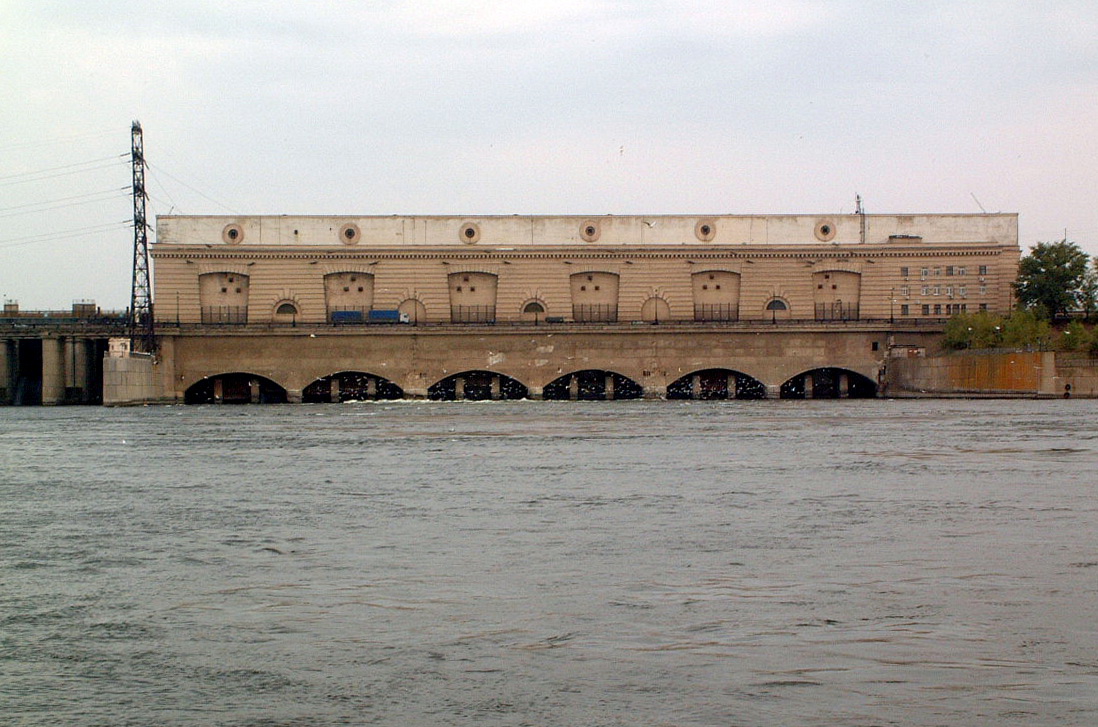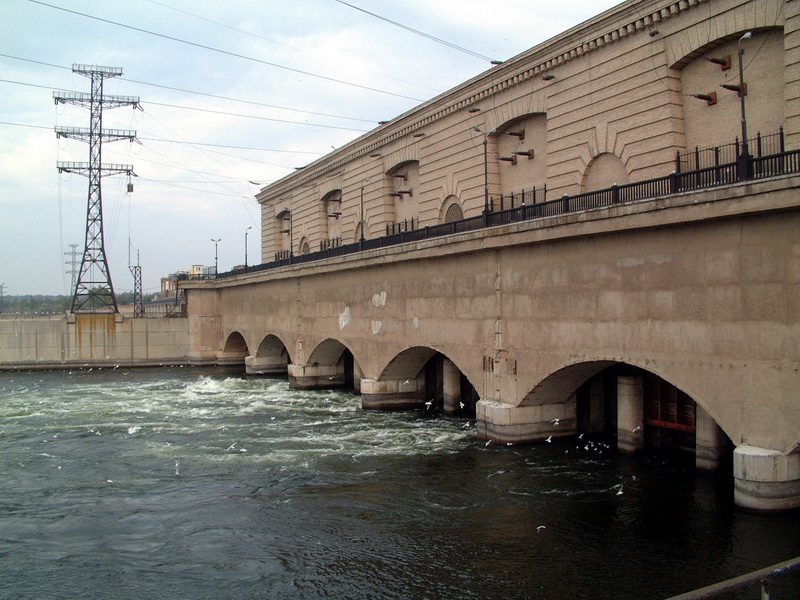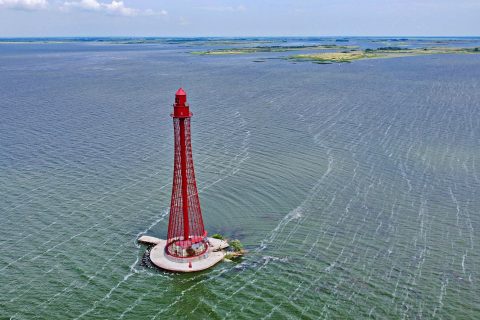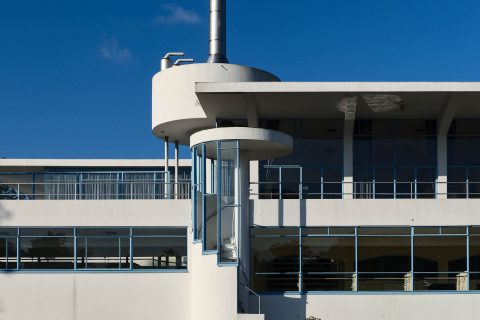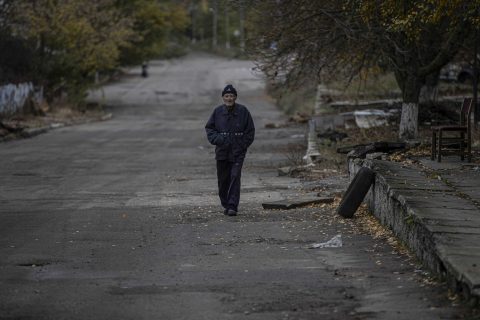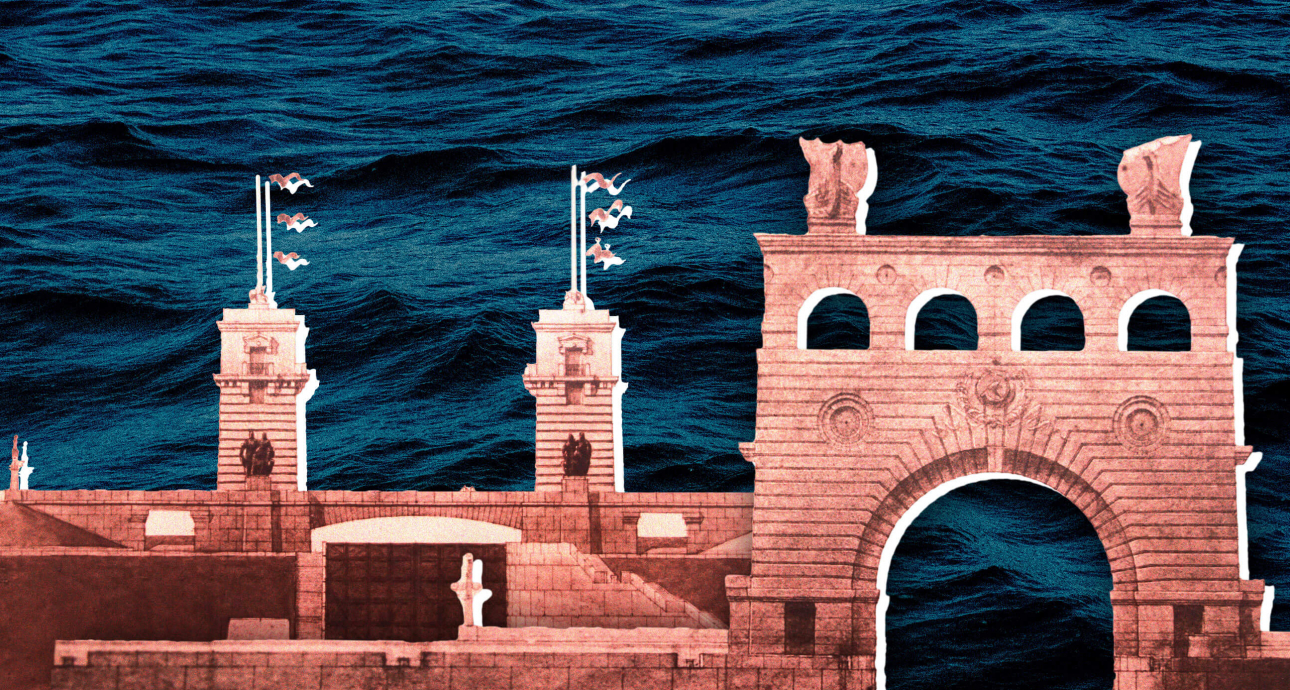
Architecture of the Kakhovka Hydroelectric Power Plant
The P.S. Neporozhnyi Kakhovka Hydropower Plant is the latest, sixth stage of the Dnipro cascade of hydroelectric stations. Despite having the lowest capacity, it generated the largest amount of electricity. It provided electric power and drinking water to the entire southeastern region of Ukraine, the water supply of Crimea depended on it, and its dam connected the right and left banks of the Dnipro River.
Construction of the Kakhovka Hydroelectric Power Plant began on September 20, 1950. The project was entrusted to the team of the “Dniprobud” management, which had previously built the Dnipro Hydroelectric Power Station between 1927 and 1932 and later restored it after the World War II.
The construction of the Kakhovka Hydroelectric Power Plant required 30% more effort than even the construction of the largest hydroelectric power station in Ukraine, the Dnipro Hydroelectric Power Station. The work was complicated by soft soils.
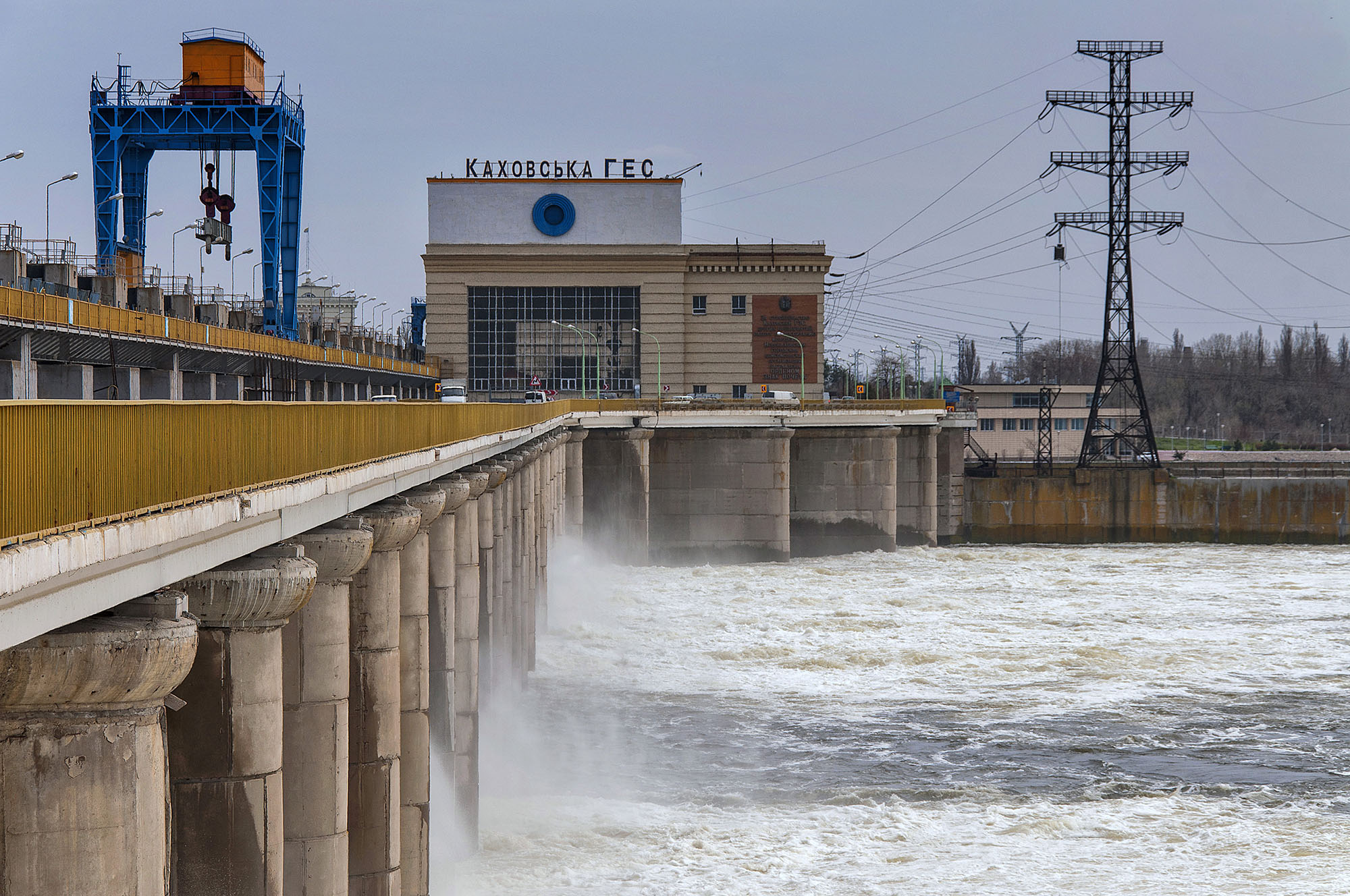
Dam and powerhouse. Photo: Volodymyr Dziubak / Wikimedia Commons
The site for the power station was chosen 10 kilometers away from Kakhovka, on the former right wing of the Kakhovka stronghold, a fortified area on the left bank of the Dnipro River between 1918 and 1920. Thanks to the hydroelectric power plant, the town of Nova Kakhovka was established in 1950, replacing the village of Klyuchove, founded in 1890. People who worked at the power station settled in Nova Kakhovka.
The first of the six turbines was installed in August 1954, and a year later, on October 18, it was put into operation. The hydroelectric power plant reached its full capacity on October 19, 1956.
The construction of the power station and the adjacent town of Nova Kakhovka involved 400 enterprises from 300 cities of the Soviet Union. Moscow and Leningrad sent graders, excavators, road machinery, and generators. Ural workers manufactured special excavators, Saratov and Yaroslavl workers produced electric winches and railway cranes. From Belarus, trucks arrived at the construction sites, while transporters came from Kazakhstan and Armenia, compressors from Uzbekistan, and communication devices from Latvia. Kiev, Kharkiv, Zaporizhia, and Odessa provided cables, roofing sheets, and specialized transport.
The construction of the power plant utilized the method of large-block concrete casting, developed by the chief engineer of the project, Petro Neporozhnyi, after whom the hydroelectric power plant was named. In 1954 alone, 700,000 cubic meters of concrete were laid using this method, surpassing the existing world records in the field.
The architectural design of the power plant was overseen by the academician of architecture, Georgiy Orlov, a disciple of the avant-garde architect Viktor Vesnin. He was also involved in the construction of constructivist structures in Zaporizhia, and after the Kakhovka power plant, he worked on the Kaunas Hydroelectric Power Plant in Lithuania on the Neman River and the Bratsk Hydroelectric Power Plant on the Angara River in Russia.
The entire hydroelectric complex features monumental architecture that draws inspiration from the Renaissance, incorporating elements that were used concurrently with classicism at that time. The Renaissance influence is evident in the three-part composition of the powerhouse with arcades in the lower section, as well as facades adorned with rustication—densely arranged stone with a roughly hewn surface. According to one of the architects of the complex, Yuriy Gumburg, the round ventilation windows of the powerhouse were inspired by a temple in Kherson. Indeed, such windows can be seen on the Greek-Sophia Church.
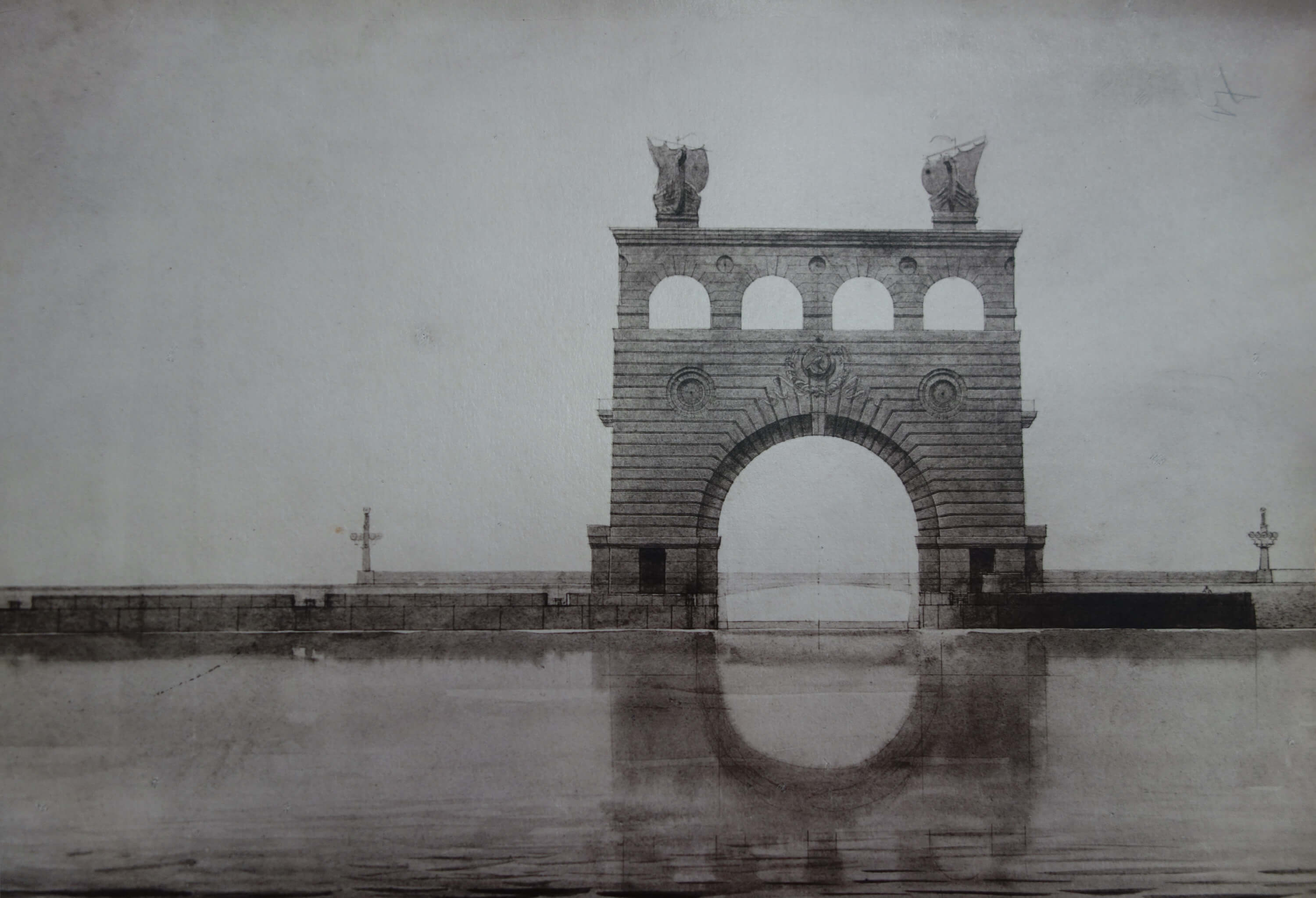
Sketch of the original gates of the Kakhovka Hydroelectric Power Plant lock. Photo: State Archives of Kharkiv region
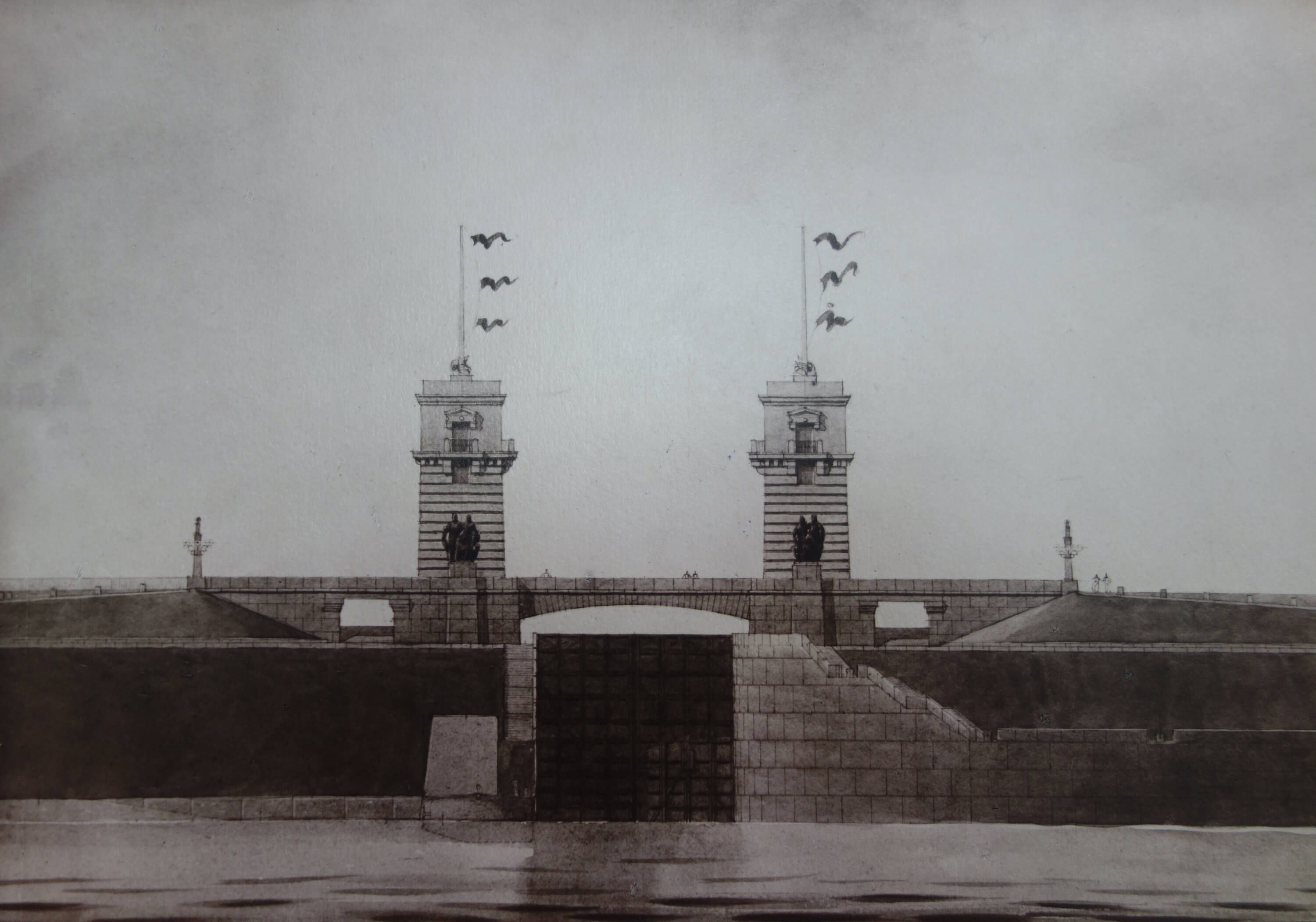
Sketch of the original gates of the Kakhovka Hydroelectric Power Plant lock. Photo: State Archives of Kharkiv region
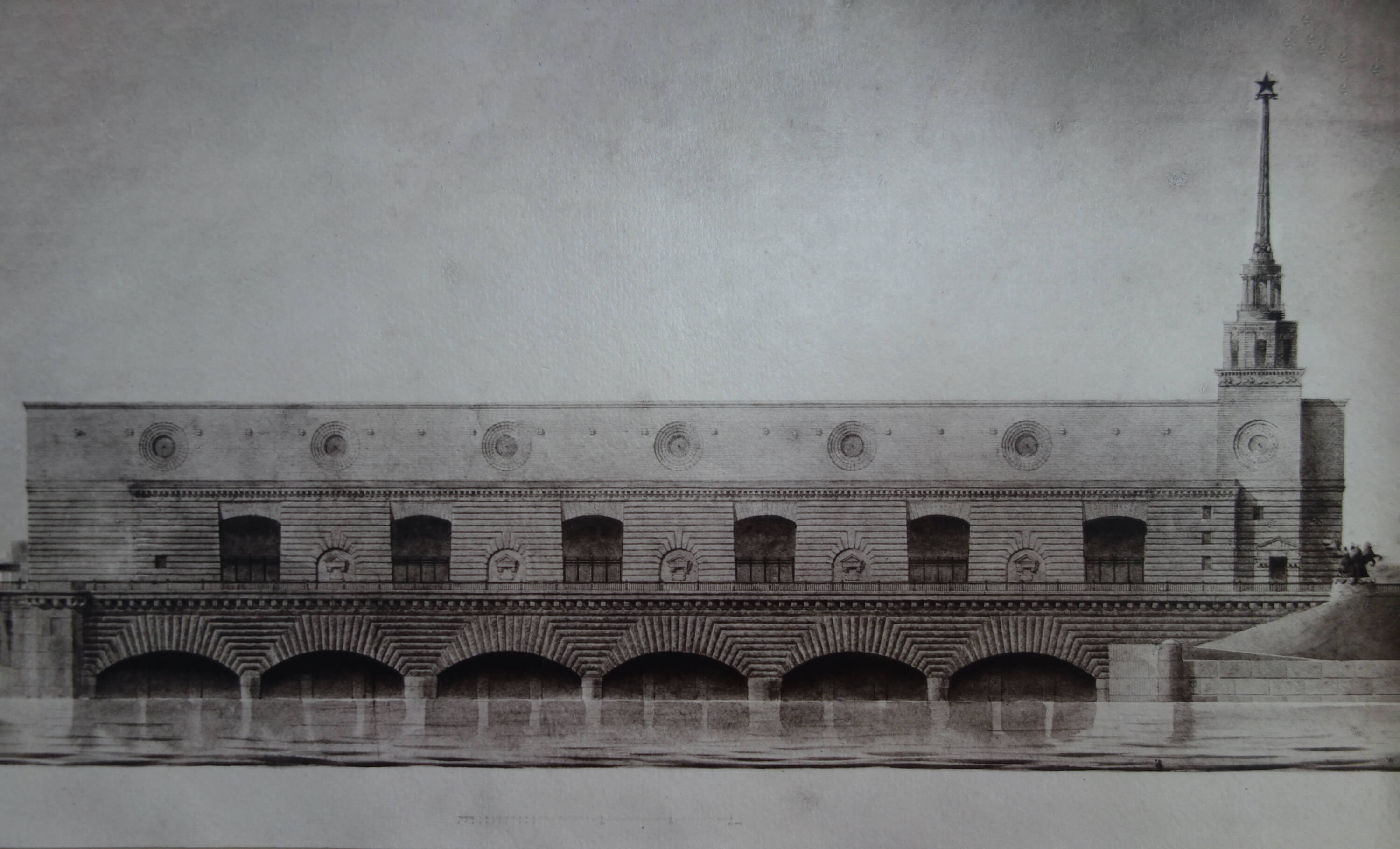
Sketch of the original gates of the Kakhovka Hydroelectric Power Plant lock. Photo: State Archives of Kharkiv region
The composition of the lock consisted of entrance gates in the form of a triumphal arch crowned with arcades. It resembles the architecture of Ancient Rome and its aqueducts. At the exit of the lock, the gates were adorned with two rectangular towers. This also alludes to the Renaissance with its composition and rustic facing. Both the arch and the towers are made of brick. The main structure of the power plant and the lock is made of reinforced concrete.
A similar concentration of classical elements can only be seen at the Kakhovka Hydroelectric Power Plant, as it was completed during the era of monumental style. Only the Dniprogres has an old three-chamber lock from the early 1930s with towers in the post-constructivism style. Other power plants, such as Serednodniprovska and Kanivska, were completed later and therefore do not have similar elements.

Model of the powerhouse of the Kakhovka Hydroelectric Power Plant. Photo: State Archives of Kharkiv region
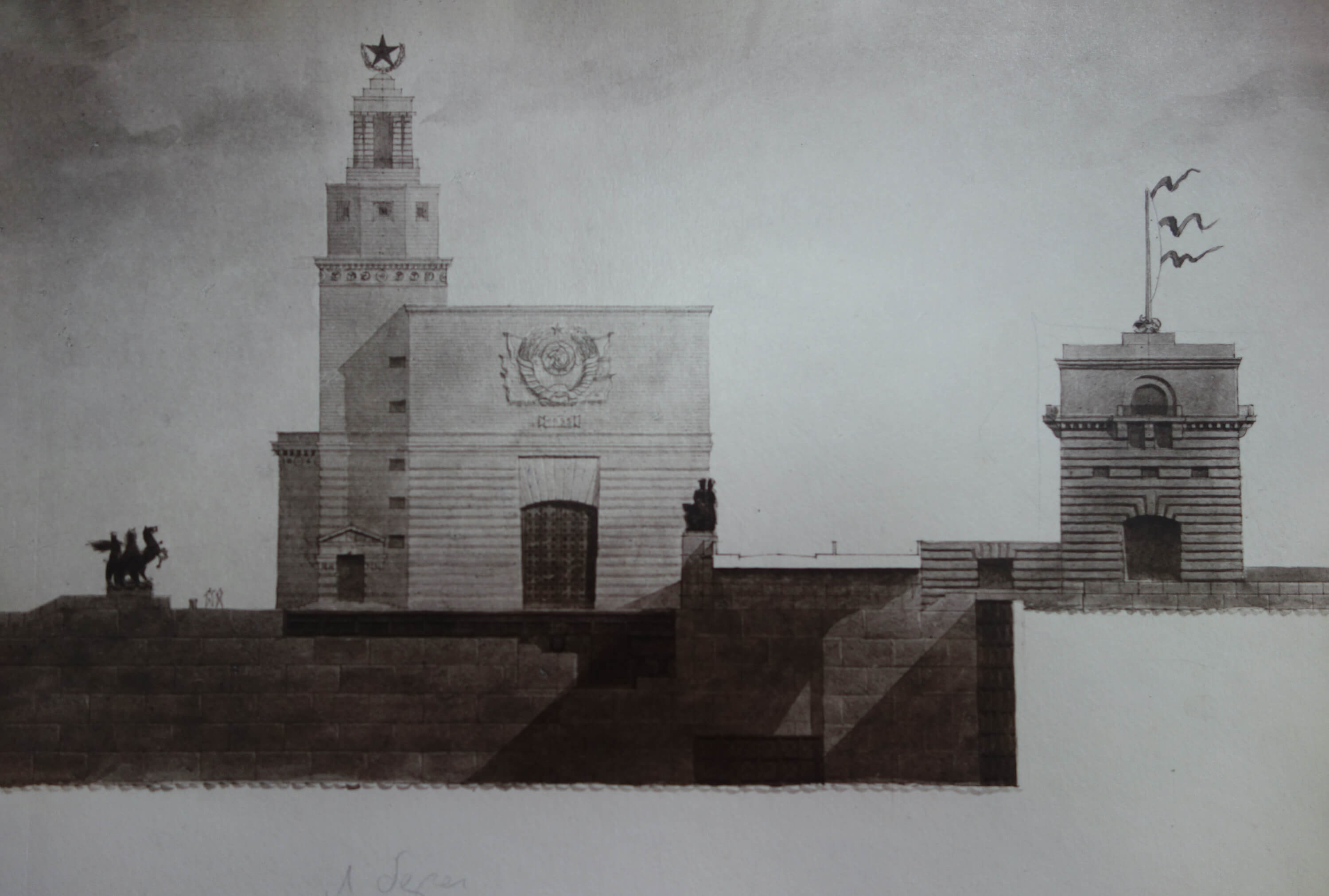
Design sketch of the powerhouse of the Kakhovka Hydroelectric Power Plant. Photo: State Archives of Kharkiv region
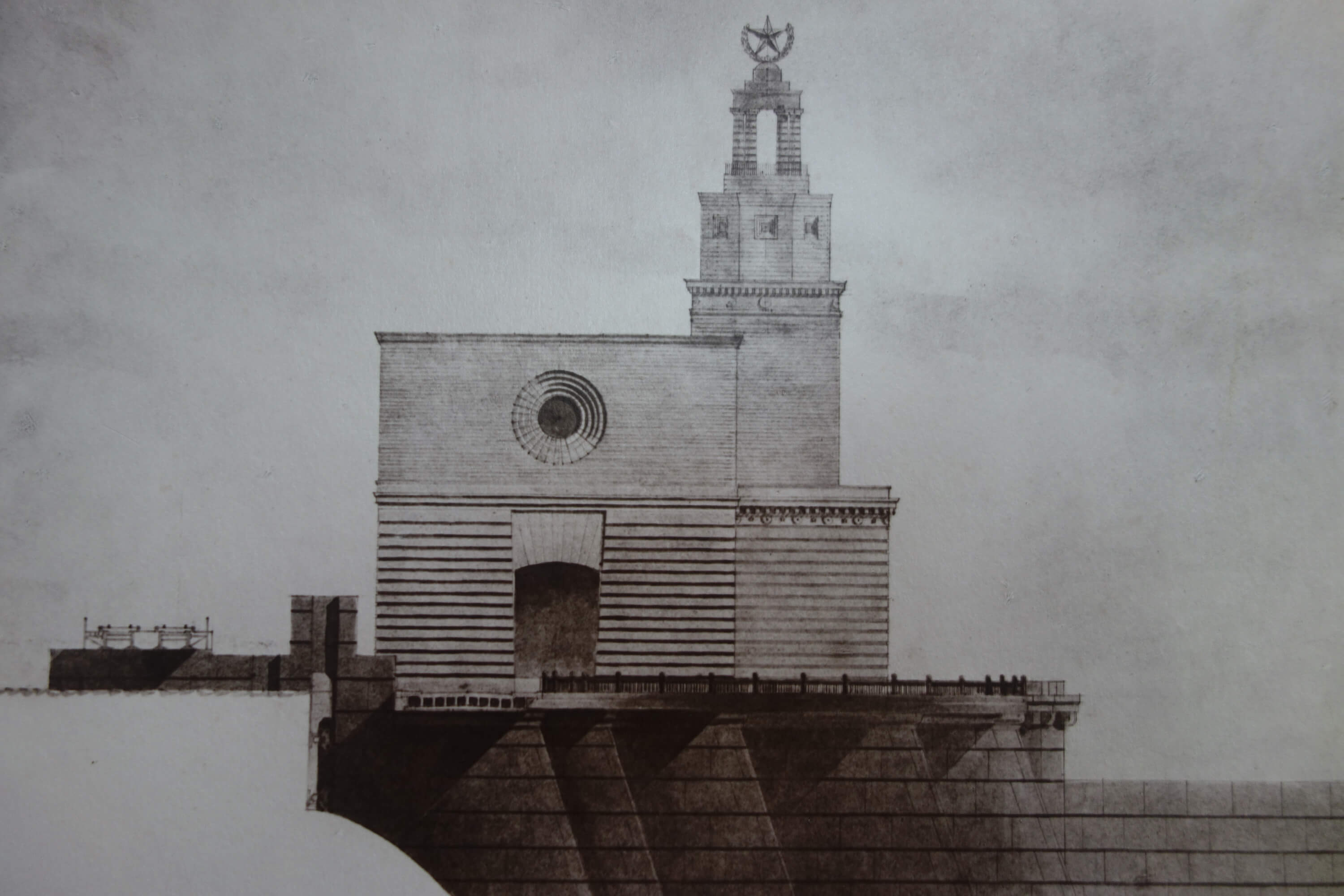
Design sketch of the powerhouse of the Kakhovka Hydroelectric Power Plant. Photo: State Archives of Kharkiv region
This hydropower complex was designed during the period of so-called Stalinist architecture, which was actually monumental architecture that gradually gave way to more functional modernism in the 1950s. The simplicity of the structural elements vividly illustrates this. The conciseness in the use of classical forms is combined with the absolutely functional elements of the concrete and reinforced concrete hydropower complex, which represent modern constructions. Therefore, the architecture of the Kakhovka Hydroelectric Power Plant exhibits duality: on one hand, classical features, and on the other hand, modern engineering structures.
Since February 2022, the power plant had been under Russian occupation. They mined the building in the spring of last year, and in November, during their retreat, they blew up the bridge at the hydropower plant, causing significant damage to the dam itself. On June 6, the Russian forces destroyed it.
Cover photo: State Archives of Kharkiv region
New and best
